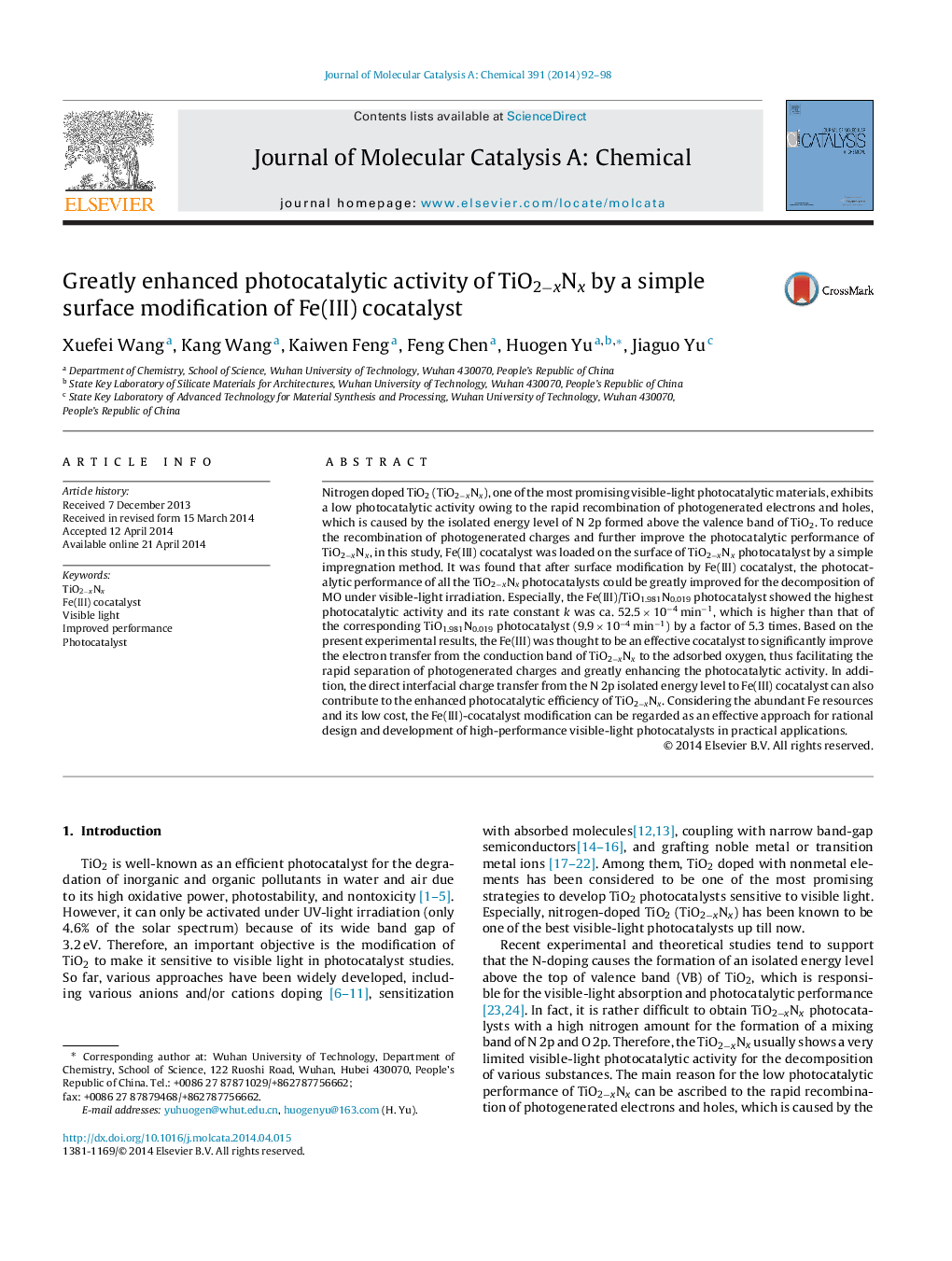| Article ID | Journal | Published Year | Pages | File Type |
|---|---|---|---|---|
| 65112 | Journal of Molecular Catalysis A: Chemical | 2014 | 7 Pages |
•Fe(III) cocatalyst was loaded on the TiO2−xNx surface by an impregnation method.•Fe(III)/TiO2−xNx showed an enhanced visible-light photocatalytic activity.•Fe(III) cocatalyst promoted the rapid separation of photogenerated charges.•The advantage of Fe(III) as a new cocatalyst is its low cost and abundant resource.
Nitrogen doped TiO2 (TiO2−xNx), one of the most promising visible-light photocatalytic materials, exhibits a low photocatalytic activity owing to the rapid recombination of photogenerated electrons and holes, which is caused by the isolated energy level of N 2p formed above the valence band of TiO2. To reduce the recombination of photogenerated charges and further improve the photocatalytic performance of TiO2−xNx, in this study, Fe(III) cocatalyst was loaded on the surface of TiO2−xNx photocatalyst by a simple impregnation method. It was found that after surface modification by Fe(III) cocatalyst, the photocatalytic performance of all the TiO2−xNx photocatalysts could be greatly improved for the decomposition of MO under visible-light irradiation. Especially, the Fe(III)/TiO1.981N0.019 photocatalyst showed the highest photocatalytic activity and its rate constant k was ca. 52.5 × 10−4 min−1, which is higher than that of the corresponding TiO1.981N0.019 photocatalyst (9.9 × 10−4 min−1) by a factor of 5.3 times. Based on the present experimental results, the Fe(III) was thought to be an effective cocatalyst to significantly improve the electron transfer from the conduction band of TiO2−xNx to the adsorbed oxygen, thus facilitating the rapid separation of photogenerated charges and greatly enhancing the photocatalytic activity. In addition, the direct interfacial charge transfer from the N 2p isolated energy level to Fe(III) cocatalyst can also contribute to the enhanced photocatalytic efficiency of TiO2−xNx. Considering the abundant Fe resources and its low cost, the Fe(III)-cocatalyst modification can be regarded as an effective approach for rational design and development of high-performance visible-light photocatalysts in practical applications.
Graphical abstractFigure optionsDownload full-size imageDownload high-quality image (126 K)Download as PowerPoint slide
